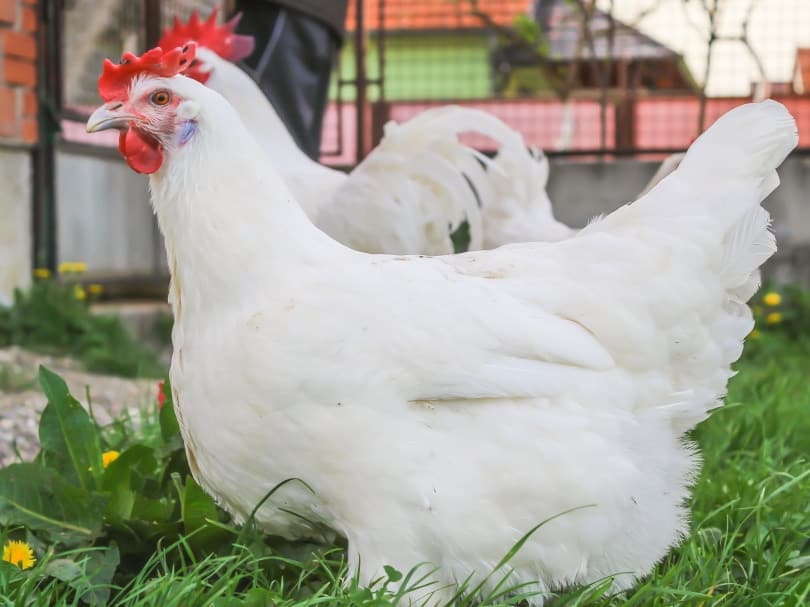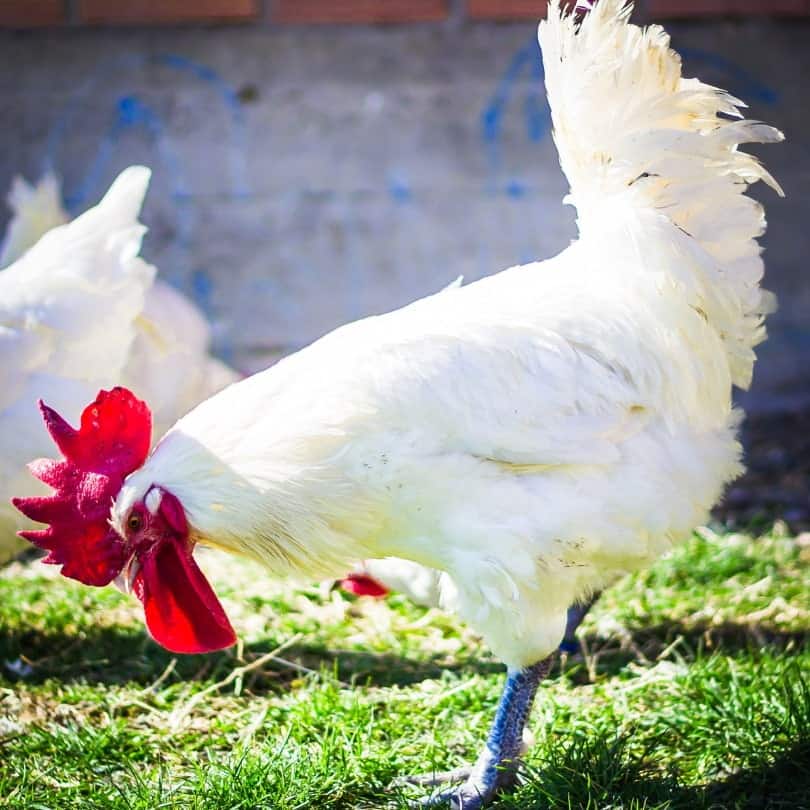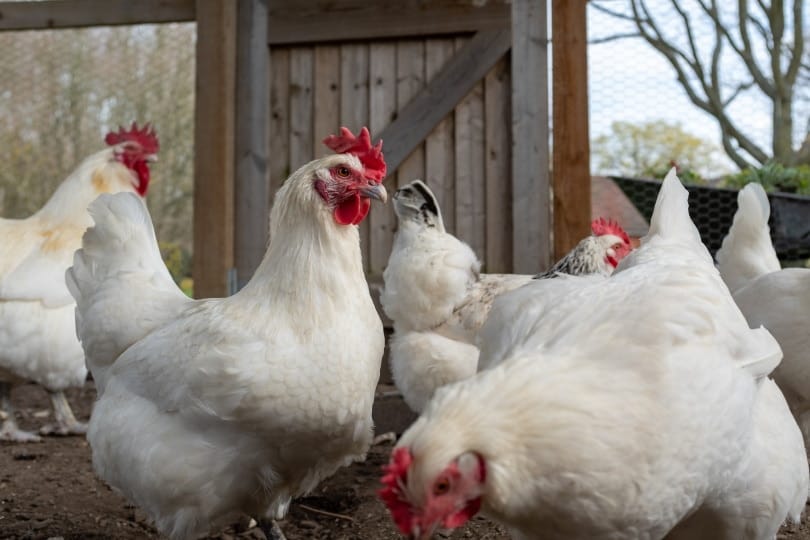The Bresse chicken is a popular meat breed that originated in the former province of Bresse in France. They were first developed in the mid- to late-1500s, and now millions of these chickens are produced each year for egg-laying and meat production. These are beautiful birds that are excellent at foraging for insects and grass seeds. Here is all the information that you should know about this interesting breed of chicken.

Quick Facts About the Bresse Chicken
| Breed Name: | Bresse |
| Place of Origin: | France, Province of Bresse |
| Uses: | Eggs, meat |
| Bull (Male) Size: | 4–5 pounds |
| Cow (Female) Size: | 3–4 pounds |
| Color: | White, black, gray, blue |
| Lifespan: | Up to 12 years |
| Climate Tolerance: | Moderate |
| Care Level: | Medium |
| Production: | High |
Bresse Chicken Origins
The first record of the Bresse Chicken was in the late 1500s: it was gifted to the Marquis residence of the Bresse region in France. In the early 1600s, King Henry IV encouraged everyone living in his kingdom to cook and eat chicken every Sunday.
The Bresse Chicken became so popular because for several decades, the breed was considered the best-tasting chicken meat in existence. While not quite as popular today, this breed is still well-known and widely consumed in France and other parts of the world today.

Bresse Chicken Characteristics
Bresse Chickens are independent and curious animals. They are experts are foraging and can cover a large area in a day, depending on where their boundaries are. These chickens can find their own food, but they appreciate a daily ration of scraps or chicken scratch.
This breed is hardy and not afraid of humans like other breeds tend to be. Since they are bred to produce eggs and meat, there is not much known about their personality and temperament because they are not observed in such a way. Those who do keep these animals as pets typically refer to them as gentle, independent, and fun to watch.
Uses
These chickens are typically bred for eggs and meat. Compared to other chicken varieties in existence, this breed produces an impressive number of eggs throughout the year. They also metabolize their nutrients differently than other chickens, which gives their meat a unique flavor when cooked and served on the dinner table.
They have thin bones, which gives them a higher meat-to-bone ratio than most other chicken breeds bred today. More than a million of these birds are bred each year to produce eggs and meat.

Appearance & Varieties
The Bresse Chicken has a bright red comb on top of their head. Their bodies are medium-size and compact, and their legs have a steel-colored tint. Their feathers may be white, black, blue, or gray, though the most common color is white. Their eyes are large, round, and alert.
There are four varieties of the Bresse Chicken breed that are categorized by their different colors. There is no significant difference between the varieties other than their colors and slight variations in size.
Population/Distribution/Habitat
These chickens still live in France, specifically in Bresse. Breeders must maintain strict standards and accreditation to raise this chicken breed. Therefore, they are not highly distributed. They live on working farms and love to graze in open pastures for insects. The Bresse chicken is wrapped in a special cloth after processing to help ensure that the fat is distributed throughout the meat evenly. These chickens are sometimes exported to other countries for sale at specialty meat stores.

Are Bresse Chickens Good for Small-Scale Farming?
This chicken breed is suitable for small-scale farming, and in fact, many breeders who raise the Bresse Chicken in France are small farmers. These chickens can live happily in small flocks, yet they do need room for grazing. They do not require much care overall, but they do need protection from possible predators.

Conclusion
The Bresse chicken is the perfect small farm animal that boasts quality flavor and texture. They are decent egg layers, which makes them worth keeping around even if meat production is a priority. These are pretty birds with curious personalities and a penchant for foraging far and wide.
Featured Image Credit: Wise Dog Studio, Shutterstock
